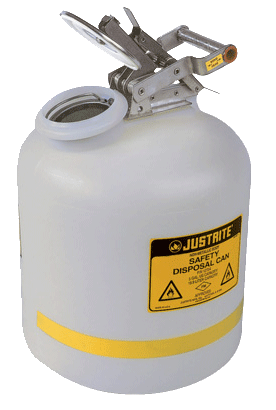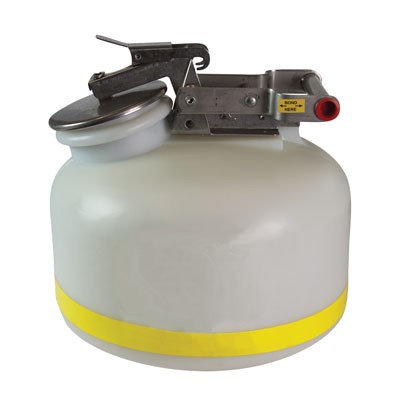Leading Industrial Wastewater Treatment Solutions: Ensuring Compliance and Performance
Leading Industrial Wastewater Treatment Solutions: Ensuring Compliance and Performance
Blog Article
How Fluid Garbage Disposal Works: A Thorough Review of Methods and Technologies Utilized

Summary of Liquid Waste Kind
The intricacy of fluid waste types demands an extensive understanding of their attributes and ramifications for disposal. Fluid waste can extensively be classified into several kinds, consisting of commercial, community, agricultural, and dangerous waste. Each category exhibits distinct buildings, needing certain monitoring methods to alleviate environmental and wellness dangers.
Industrial liquid waste stems from making processes and often has a series of pollutants, such as heavy metals, solvents, and natural compounds. Municipal fluid waste, mostly comprising wastewater from households and commercial facilities, consists of organic matter, nutrients, and pathogens (industrial wastewater treatment). Agricultural liquid waste, including drainage from ranches, may consist of fertilizers, chemicals, and animal waste, posing threats to water high quality and ecosystems
Harmful fluid waste is identified by its toxicity, sensitivity, or potential to trigger damage. Recognizing these varied liquid waste types is vital for establishing reliable disposal methods and guaranteeing conformity with ecological guidelines.
Physical Therapy Approaches

Screening is the initial step, where bigger fragments and particles are gotten rid of from the fluid waste utilizing screens or grates. This process protects downstream tools from damages and makes sure smoother operation. Following testing, sedimentation makes use of gravitational pressure to separate solids from fluids. In sedimentation storage tanks, heavier particles resolve near the bottom, creating a sludge layer, while the clarified liquid can be more dealt with.
Filtration is an additional vital technique that entails passing the fluid through permeable materials, such as sand or membrane layers, to capture smaller particles. This action boosts the top quality of the fluid, making it ideal for succeeding therapy procedures.

Chemical Therapy Strategies
Chemical therapy techniques are crucial for successfully taking care of liquid waste, particularly in attending to liquified and colloidal contaminants that physical techniques may not appropriately remove. These strategies utilize various chemical representatives to neutralize, precipitate, or transform dangerous materials into much less hazardous forms.
One common technique is coagulation and flocculation, where chemicals such as alum or ferric chloride are added to advertise the gathering of suspended fragments. This process enhances sedimentation, enabling much easier removal of the resulting sludge. In addition, oxidation procedures, employing representatives like chlorine or ozone, are utilized to damage down complex organic substances and pathogens, making the waste safer for discharge or further therapy.
Neutralization is an additional crucial method, which adjusts the pH of acidic or alkaline waste streams to neutral degrees, preventing prospective injury to downstream systems and the atmosphere. Moreover, progressed oxidation processes (AOPs) make use of mixes of oxidants and ultraviolet light to degrade persistent pollutants, achieving a higher degree of therapy see this site efficiency.
Organic Therapy Processes
Biological treatment procedures play a vital function in the monitoring of fluid waste by making use of microorganisms to break down raw material and reduce impurity levels. These procedures can be broadly categorized into cardio and anaerobic therapies, each employing particular microbial neighborhoods to achieve reliable waste deterioration.
Cardio treatment involves using oxygen to promote the failure of natural materials by germs. This process is generally implemented in turned on sludge systems, where oygenation tanks give a helpful environment for microbial growth, resulting in the oxidation of organic pollutants. The resultant biomass can be separated from treated effluent via sedimentation.
On the other hand, anaerobic therapy happens in the absence of oxygen, relying on different bacteria to break down raw material. This approach is especially useful for high-strength waste, as it generates biogas, a sustainable power source, while minimizing sludge manufacturing. Technologies such as anaerobic digesters are frequently used in industrial and community applications.
Both anaerobic and cardio biological therapies not only lessen the environmental impact of liquid waste view publisher site however likewise promote source recuperation, making them vital components of sustainable waste monitoring strategies. Their adaptability, performance, and effectiveness sustain their extensive implementation across different industries.
Emerging Technologies in Disposal
Ingenious strategies to fluid waste disposal are quickly evolving, driven by improvements in modern technology and an increasing focus on sustainability. Amongst these emerging technologies, membrane layer bioreactors (MBRs) have actually obtained traction for their ability to combine biological therapy with membrane filtering, resulting in top quality effluent that can be reused in different applications. MBRs make it possible for smaller sized impacts and a lot more efficient procedures compared to traditional systems.
One more appealing advancement is the usage of anaerobic digestion incorporated with nutrient recovery modern technologies, which not only treats liquid waste however also creates biogas and recovers important nutrients like nitrogen and phosphorus. This dual benefit improves resource performance and decreases ecological influence.
In addition, advanced oxidation procedures (AOPs) are being taken on for the destruction of intricate organic pollutants. These techniques utilize powerful oxidants and catalysts to damage down impurities at the molecular level, offering a very efficient solution for tough waste streams.
Furthermore, the integration of expert system and artificial intelligence in waste management systems is maximizing functional effectiveness and anticipating maintenance, bring about lowered prices and enhanced ecological compliance. These modern technologies reflect a considerable shift towards even more reliable and lasting fluid waste disposal techniques.
Verdict
In conclusion, efficient liquid waste disposal necessitates a detailed understanding of various techniques and technologies. By continuously progressing these approaches, it comes to be feasible to address the expanding challenges connected with liquid waste, eventually contributing to ecological protection and resource recuperation.
Liquid waste disposal is a vital facet of environmental management, needing a detailed understanding of various strategies and technologies customized to different Go Here waste kinds. Fluid waste can broadly be classified into numerous types, including industrial, local, farming, and hazardous waste. Agricultural fluid waste, including drainage from ranches, may include plant foods, pesticides, and animal waste, posing risks to water top quality and ecological communities.
Different physical therapy approaches play a vital function in taking care of fluid waste efficiently - industrial wastewater treatment.In final thought, efficient fluid waste disposal necessitates an extensive understanding of various strategies and modern technologies
Report this page